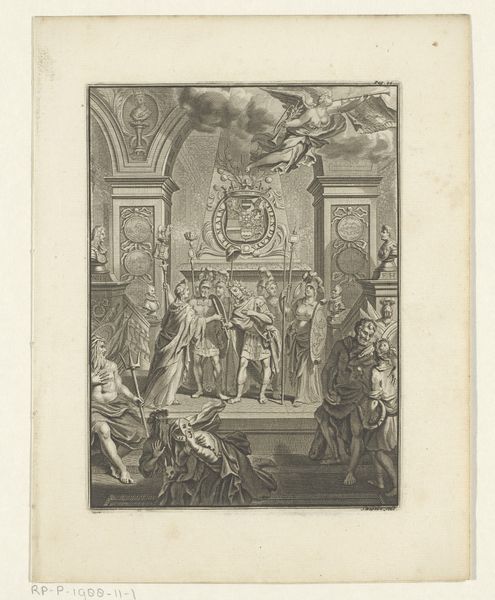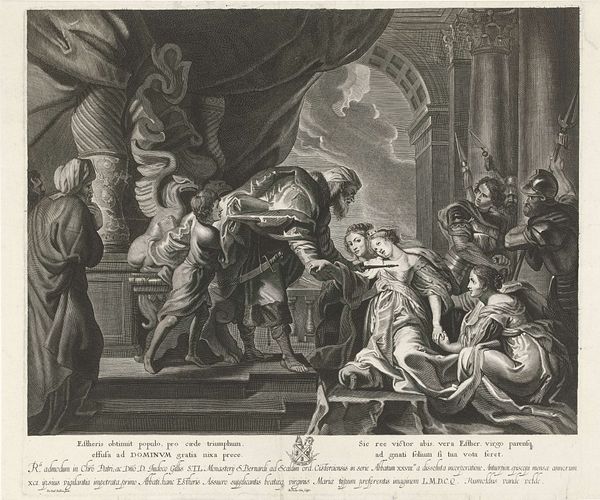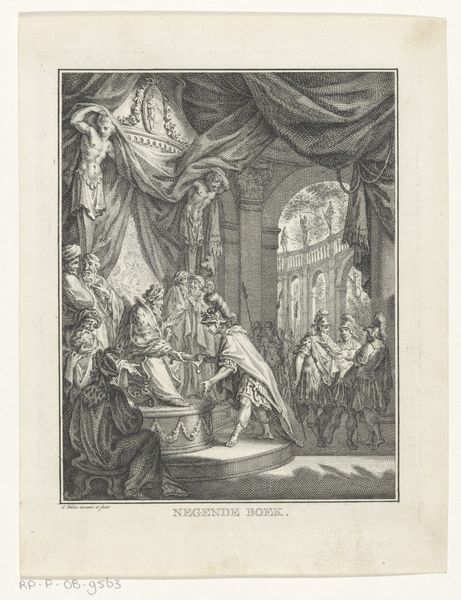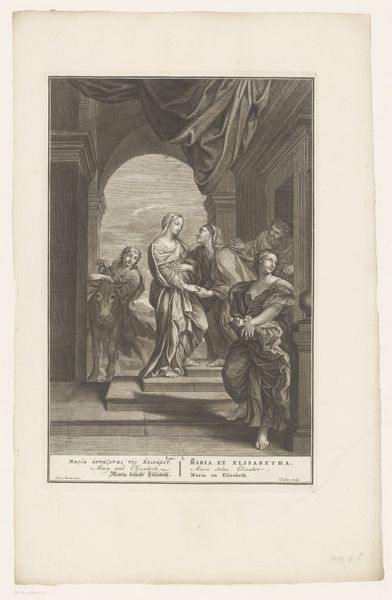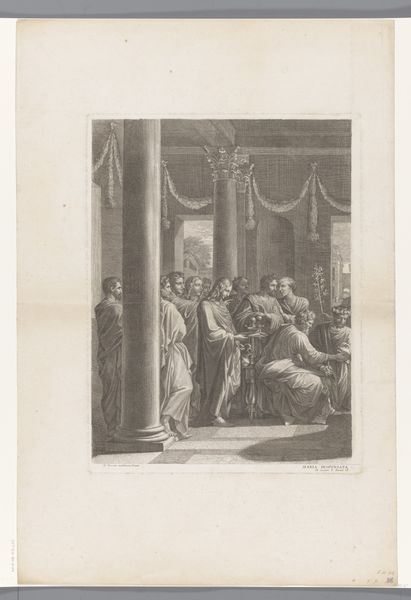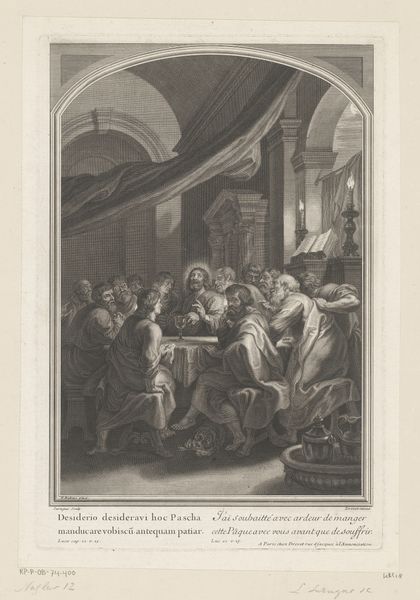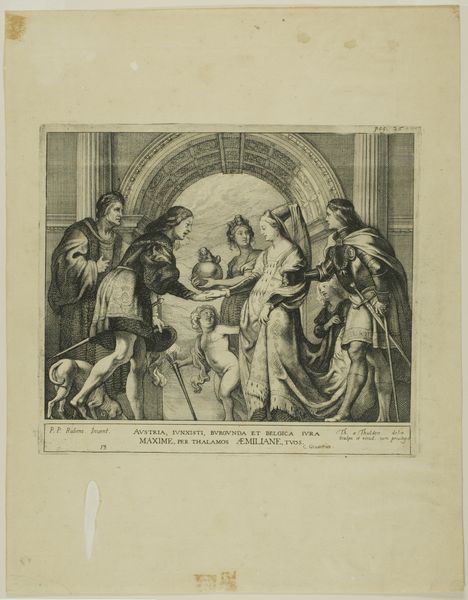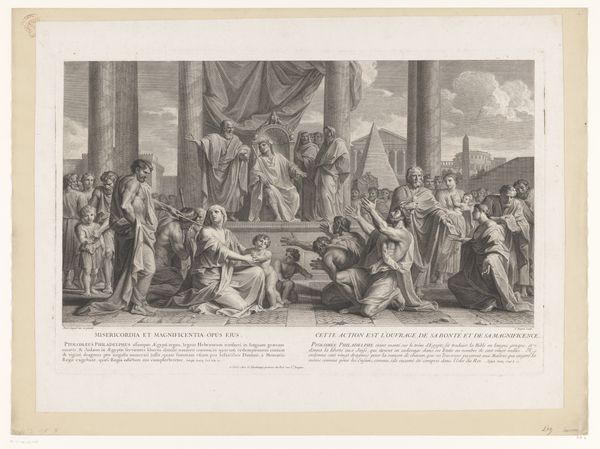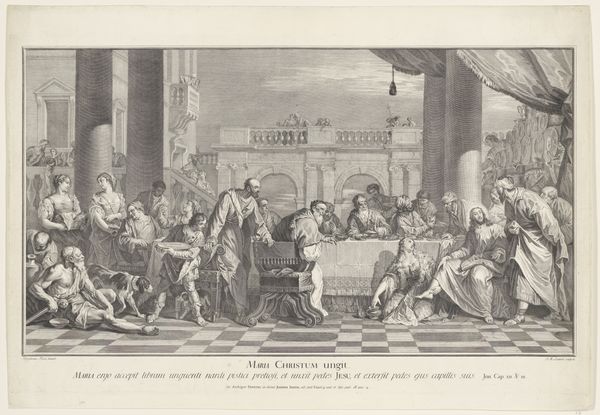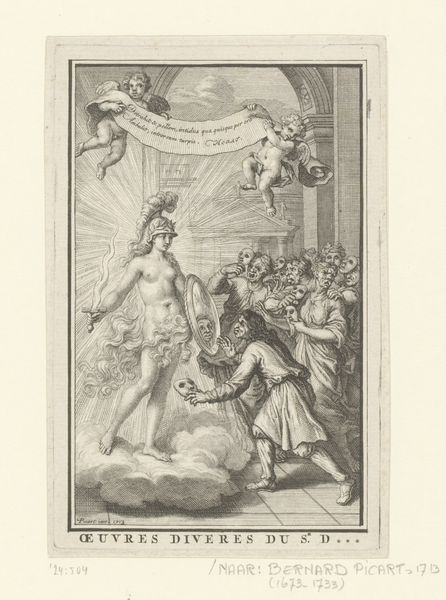
Dimensions: 406 × 331 mm (image); 468 × 367 mm (plate); 554 × 450 mm (sheet)
Copyright: Public Domain
Editor: We’re looking at Nicolas Joseph Voyez’s "The Road to Fortune", an engraving from sometime between 1762 and 1806, currently housed at the Art Institute of Chicago. The first thing that strikes me is the chaos depicted within this ornate, Baroque interior. It feels theatrical, almost like a scene frozen from a play. What exactly is going on here? How do you interpret this scene? Curator: Oh, it’s deliciously scandalous, isn’t it? Imagine stepping into a room filled with whispered secrets and rapidly unfolding drama. The Road to Fortune, indeed! Voyez captures that delicate balance between elegance and excess. Notice how the opulent interior – the chandelier, the columns – contrasts with the disorderly behaviour. Is that a fainting lady? A musician caught in the act? Fortune, perhaps, leads down a bumpy, slightly tipsy road. There's definitely an ironic undercurrent here, a sly wink at the viewer. Do you see how the older gentleman observes with detachment from the corner, whilst an overturned violin lies forlorn on the floor? Editor: Absolutely! I didn't initially pick up on the contrast in behaviors or the somewhat removed bystander. Now that I consider the elements, the 'road to fortune' doesn't seem all that fortunate! Curator: It begs the question, what price is paid to travel this 'road'? Think of Hogarth's engravings. Voyez taps into a similar vein of social commentary, packaged in refined artistry. He hints at moral ambiguity, making us question what it truly means to arrive at a destination we perceive to be fortunate. Editor: This definitely gave me a new perspective; initially, I overlooked the nuances of commentary in favor of seeing a snapshot of theatrical frenzy. Curator: Precisely. And isn't it wonderful how a closer look can unlock a richer story? Art, after all, is in the looking.
Comments
No comments
Be the first to comment and join the conversation on the ultimate creative platform.
